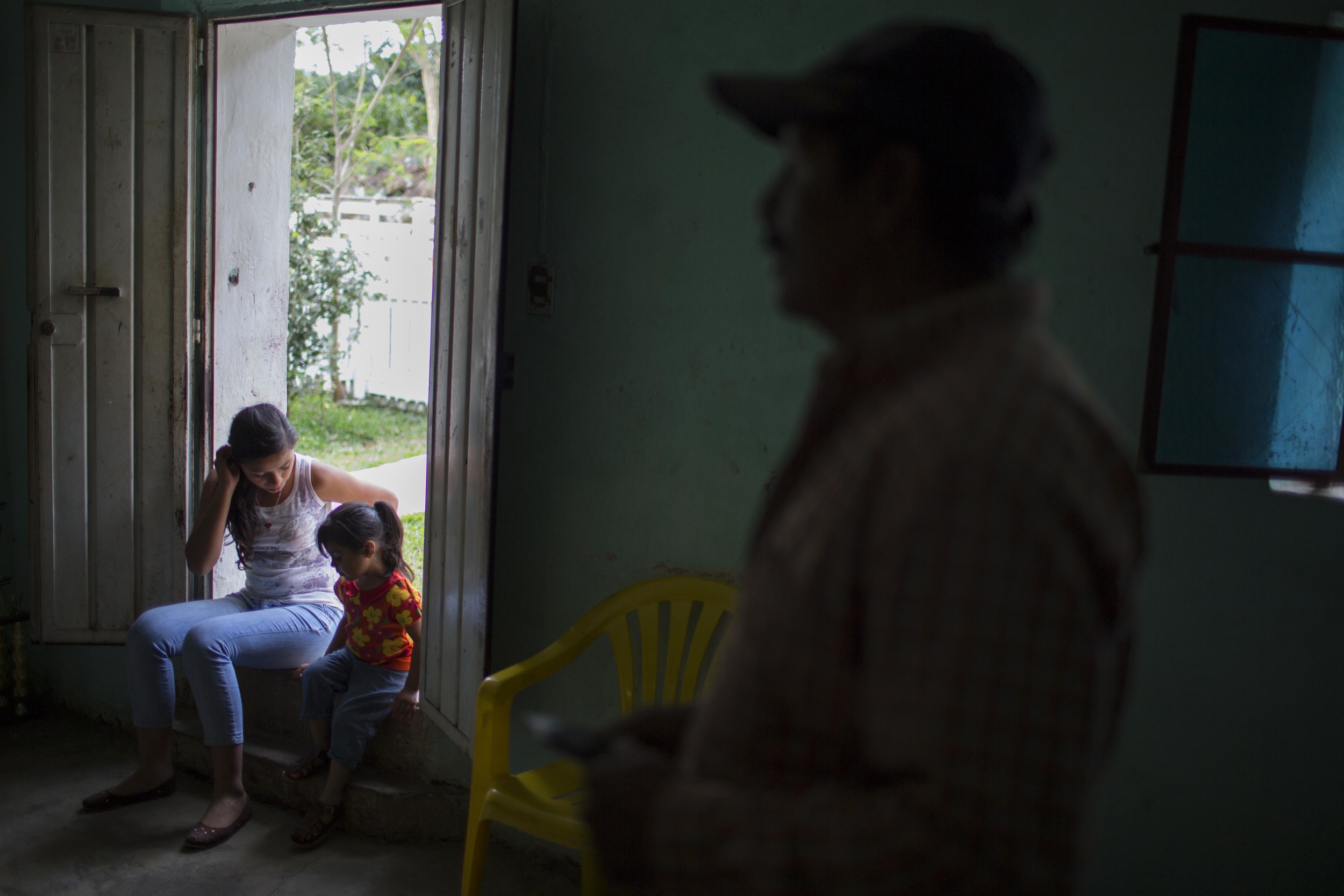A brutal decades-long war between drug gangs has forced dozens of fearful families from the Mexico to come to the border seeking political asylum, in the 1980s and 1990s. Since the drug war ended in 1996, thousands of migrants still have found reasons to leave Mexico, they say drug gangs have laid waste to their town, burning down houses and killing people in the street. In recent years, violence has been on the rise as powerful drug cartels expand their reach. And more than half of the country's population lives in poverty.
That's one reason Benito and her wife, Olga, made a decision nearly 18 years ago that would change their family forever.
He was 25 and she was 22 when they married in their hometown of Tepetlán, a city nestled among the central zone in the State of Veracruz, 500 miles from the Mexico border. They lived in a tiny adobe house that filled with mud when it rained. For six years, they scraped by on whatever Benito could make as the caretaker of a coffee farm. They spent all the money he earned on the day he made it.
Mexico–United States border, Laredo, TX. December, 2015. The giant rusty fence of metal bars along the border here, built in recent years to keep illegal immigrants from crossing into the United States, has a new nickname among local residents: Jurassic Park Gate, a nod to the barrier in a 1993 movie that kept dangerous dinosaurs at bay in a theme park.
Benito and Olga wanted to give their girl a better life and send her to school. He'd thought about going to America before. After the threats, they agreed, there was no other choice.
On the day Pedro left, Abigail was 3 years old. While they slept, Benito gave them each a kiss and slipped out the door in the dark of night. Olga cried. Benito promised to return.
Along with another group of people in the town, he crossed the Mexico-U.S. border, trekked through the desert to Tucson and then headed east toward North Carolina, where Olga's brother-in-law had moved there after crossing the border illegally several years earlier. It's a common story in their hometown. Olga says that nearly half their neighbors have family living in the United States and sending money home. Migrants abroad sent more than $5 billion to Mexico last year, according to the country's national bank.
Since the summer day when he left in 1997, Olga says, Benito's support has never wavered. He calls home three times a day and sends her and their three children everything they need. But still, she's felt alone.
Enchanted by what they believe to be the American Dream, many immigrants from Mexico, Central America, and South America have decided to migrate to the United States.
Some of the push factors encouraging, Hispanics to immigrate include a lack of resources and opportunities in their home countries, government abuses, and even the search for adventure. Given the exclusive nature of U.S. immigration legislation and lack of opportunity for legal access among those from particular countries, the process of migration hasn't always been easy, or even legal.
Chatham County, located in the piedmont area of North Carolina, has become a new home for Latino immigrants from Mexico, Guatemala, and El Salvador, many arrive without proper documents and live in constant fear of arrest and deportation, North Carolina, November 10, 2014.
“My dream is giving my family everything that I wasn't able to give in my own country before, cause they are the most important people in my life.”
— Benito
“I’m proud to be Mexican, but I feel more American. When they ask you, who are your mother and father, they are the people who help you grow. Who is the one keep me safe? It’s America.”
— Abigail
“I want them to go to school to learn something so that when they’re bigger they work at something different and not at the factory.”
— Olga
Many other families likewise have mixed immigration status, with parents here without proper documentation, older siblings who may have DACA (Deferred Action for Childhood Arrivals), and younger children who are citizens. A 2016 Migration Policy Institute report estimates that 5.1 million children — that's 7 percent of children in the US — have at least one parent who is undocumented. Most are US citizens themselves.
Almost every night, Olga used video chat to talk with her family in Mexico, showing them the gleaming white kitchen with modern appliances, the result of their renovations on their old house in the United States.
They talked about having their youngest daughter go visit them, maybe next summer. Because she was born in North Carolina, she is a US citizen and can cross borders easily.
They weren't sure of future plans. "We live well," Olga's mother said, "But we miss our children."
A few months later, Trump was elected.
Large-scale deportations strike Abigail as unlikely, but she also said it's unlikely that she will gain the permanent residency or citizenship that would give her a stronger foothold in the US, where she have lived for 20 years, where she finished high school and where they played in a punk rock band.
"We have ideas and we have dreams and they're not likely to happen anytime soon in this country. So now we're looking at our options. Whether it's here, or in Europe, or even back in Mexico."
“Thousands have died in the desert,” Benito says, there is no going back. “And if death doesn’t stop us, will a wall? I don’t think so, right? I don’t think so.”























































